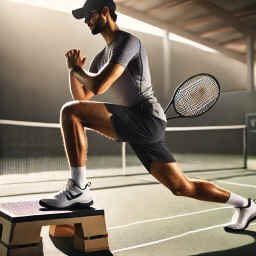Playing the Cheater
Dealing with an opponent who consistently cheats can be extremely frustrating, but it’s important to keep your cool and stay focused on your game.
Bottom line: Don’t let the cheater win by throwing you off your game. Keep your head, stay focused, and remember—you’re stronger than their attempts to cheat!
Here are some ways to handle the situation without letting it ruin your performance:
1. Stay Calm and Control Your Emotions
Cheating can get under your skin, but losing your temper only helps your opponent. Take deep breaths (4-7-8 breathing) , stick to your routines between points, and focus on what you can control—your game, your effort, and your mindset. When you keep your emotions in check, you maintain your ability to think clearly and play your best tennis.
2. Use Sportsmanship to Your Advantage
Politely question the calls in a calm, respectful way. You could say something like, “Are you sure about that call?” Often, this can make the opponent think twice before making another unfair call. If they continue, calmly request a line judge or umpire if it’s a tournament or match that allows it.
3. Don’t Let Their Cheating Affect Your Game
The cheater is trying to distract you and take you out of your game. Don’t give them the satisfaction of losing focus. Stick to your strategy, keep hitting your shots, and play smart. Remember, they’re cheating because they don’t trust their game enough to beat you fairly.
4. Play Aggressively and Take Charge
Cheating is easier when points are close. By being more aggressive and dominating the points, you leave less room for your opponent to make unfair calls. Focus on winning points decisively—force clear errors and hit winners that your opponent can’t dispute.
5. Focus on the Big Picture
Yes, cheating is frustrating, but remember that you’re not just playing to win this match—you’re playing to improve your skills and mental toughness. Cheaters come and go, but the ability to stay composed under pressure will help you in every match you play — you are developing a life skill. Use this experience to build mental strength, knowing that you can rise above the frustration.
6. Seek Help When Necessary
If the cheating persists and there are officials present, don’t hesitate to ask for help. You can request a referee or umpire to monitor the match. If there’s no official available, calmly bring the situation to the attention of a coach or tournament director after the match.
Stay strong and don’t let the cheater throw you off your game. Keep your cool, stay focused, and remember—you’re more smarter then their mind games!
Check back later for another post on “Mind Games”.







